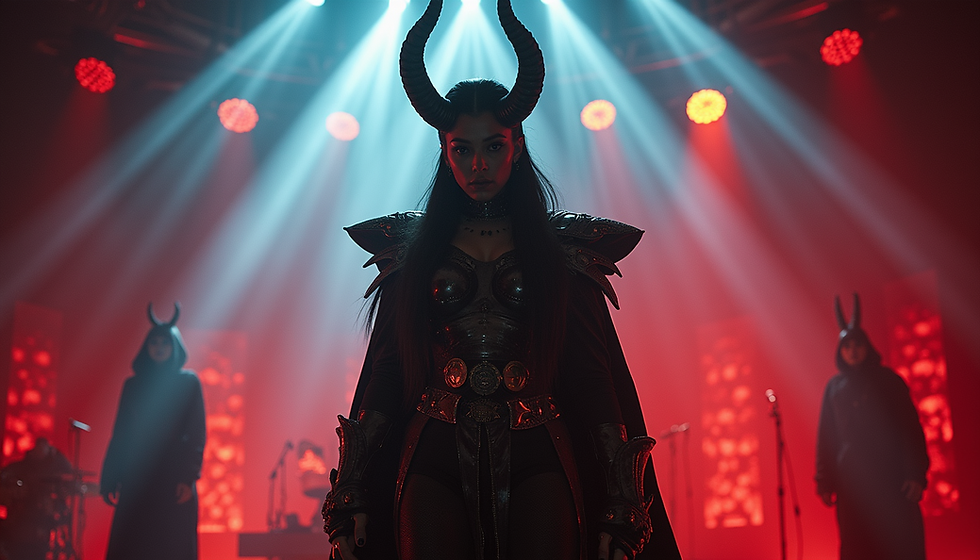Unlocking the Secrets of Dragon Lore and Mythology
- Joseph Fanning
- Oct 6
- 3 min read
Dragons have fascinated people for centuries. These mythical creatures, often depicted as large, flying beings with the ability to breathe fire, symbolize both fear and wonder. In this blog post, we explore the rich history of dragon lore, unveiling the secrets behind these legendary beasts that have inspired countless stories and artworks.
The Origins of Dragon Myths
The idea of dragons dates back to ancient civilizations. Some of the earliest references can be found in Mesopotamian and Egyptian texts, where dragons were often linked to chaos and destruction. For example, the Babylonian creation myth features Tiamat, a dragon-like goddess who represents the primal forces of chaos, ultimately symbolizing a threat to order.
In contrast, Chinese mythology views dragons in a more positive light. They are celebrated as auspicious symbols of power, strength, and good fortune. The Chinese dragon—a long, snake-like creature—is often associated with rain and water, critical for agriculture. In fact, the Chinese dragon festival, celebrated annually, has roots that demonstrate the significance of these creatures in agricultural prosperity.

The Symbolism of Dragons
Dragons embody powerful symbolic meanings in different cultures. In Western mythology, they are often portrayed as the epitome of evil—guarding immense treasures and threatening heroes. The tale of Saint George and the Dragon serves as a classic illustration, where Saint George’s battle against the dragon represents the triumphant struggle against evil.
On the other hand, in Eastern traditions, dragons are seen as wise protectors. For instance, in Japan, dragons are considered guardians of water bodies and are often linked to rainfall and harvests. This duality illustrates the complexities we encounter in human nature and the world at large.
Dragons in Literature and Popular Culture
Dragons have made a significant impact in literature, from ancient tales to modern fantasy. For example, in J.R.R. Tolkien's "The Hobbit," Smaug is a dragon known for hoarding treasures, which directly influences heroic deeds in the story. This portrayal has had a lasting effect on how dragons are perceived in fantasy literature and beyond.
Recently, the success of "Game of Thrones," particularly with Daenerys Targaryen's dragons, has generated renewed interest in dragons. In this series, dragons are not just fearsome creatures; they are powerful allies, symbolizing Daenerys's right to the Iron Throne. This contemporary representation has captivated new audiences, prompting them to explore dragon myths tailor to their cultural contexts.

The Science Behind Dragon Myths
While dragons are purely mythical, some researchers suggest their origins lie in encounters with real creatures. For instance, large reptiles like crocodiles or massive snakes might have inspired dragon stories. Fossils of dinosaurs and big predators could also have led ancient people to create these myths. According to a study by the University of California, approximately 20% of ancient literature may directly reference dragon-like creatures, indicating a potential fear response to predators.
As humans began to understand their environment, dragons acted as personifications of the dangers they faced. Rather than purely fearing the unknown, narratives surrounding dragons helped communities articulate their fears and share experiences.
The Evolution of Dragon Imagery
The depiction of dragons has changed dramatically. In medieval Europe, they were commonly illustrated as terrifying, fire-breathing beasts. This image was greatly influenced by knights’ tales of dragon-slaying, reinforcing the notion of dragons as evil adversaries.
In contrast, modern portrayals of dragons are often much more diverse. Today, dragons can be wise mentors, playful companions, or misunderstood beings. This shift reflects a broader change in storytelling, allowing for more nuanced views of these majestic creatures.
The Role of Dragons in Modern Fantasy
Dragons remain central figures in contemporary fantasy literature and media. They serve as formidable foes and powerful allies. The complexity of dragons allows for rich character development and moral dilemmas.
In video games, dragons are prominent, appearing as both adversaries and companions. For instance, in "The Elder Scrolls V: Skyrim," dragons are not only antagonists but also play a crucial role in the game, allowing players to thrive in a world filled with dragon lore. Similarly, "Dragon Age" integrates dragons into its storytelling, enhancing player engagement with interactive gameplay.
The Timeless Allure of Dragons
The fascination with dragons spans cultures and eras. They symbolize everything from chaos to wisdom. By exploring their origins and representations, we gain insight into human experiences that tap into themes of power, fear, and the mysteries of the unknown.
Dragons can be viewed as chaotic forces or wise guardians, each perspective reflecting the complexities of our world. These narratives ensure that the legacy of dragons continues to thrive, captivating future generations with their timeless allure.

Joe is an orange belt in Karate. He loves dragons.










Comments